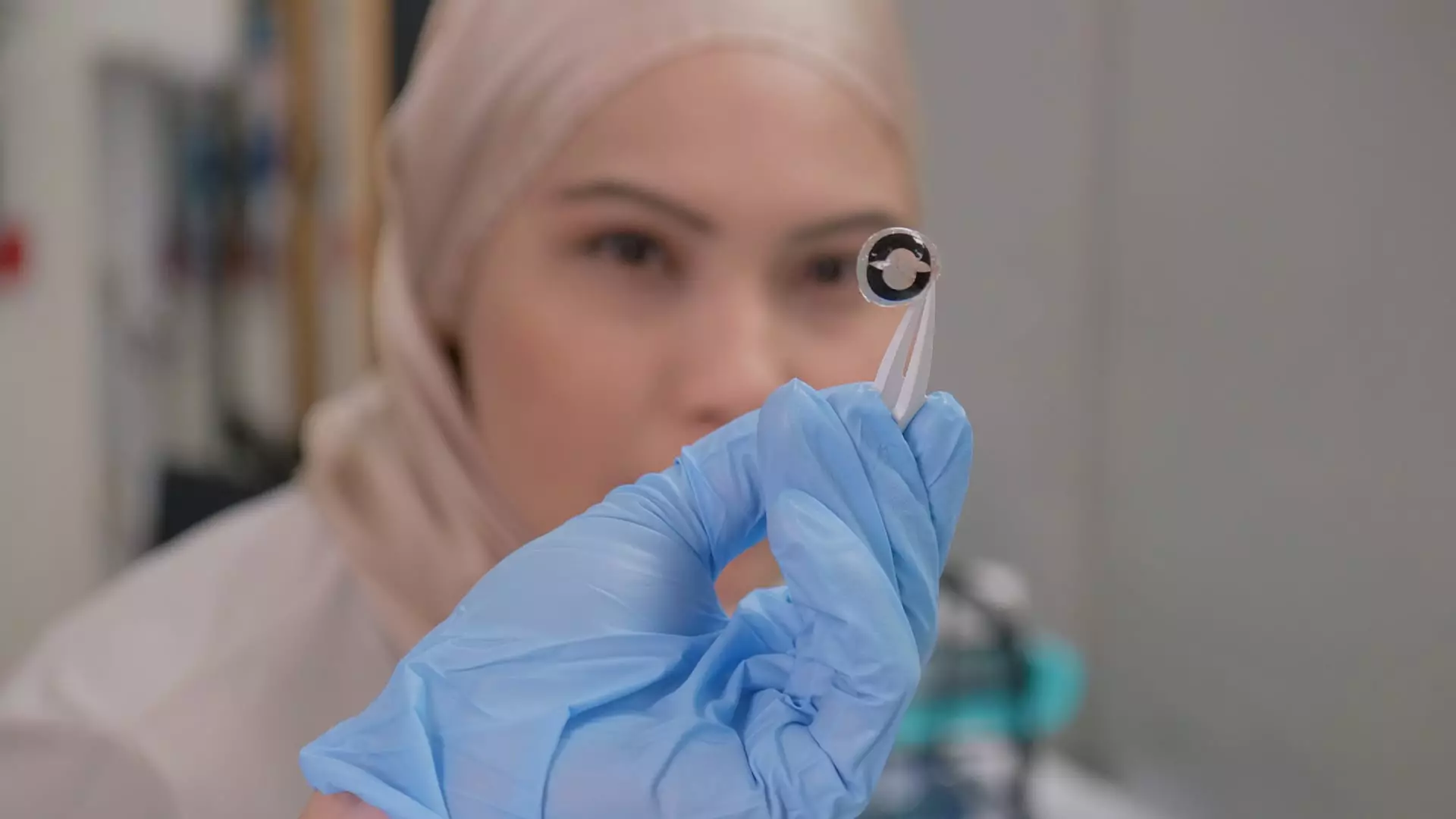Scientist Lee Seok Woo found inspiration for his groundbreaking invention in an unexpected place – a “Mission Impossible” movie. The scene in the movie where an agent wears contact lenses with facial recognition and eye tracking capabilities sparked an idea in Lee’s mind. As an associate professor at Nanyang Technological University’s School of Electrical and Electronical Engineering, Lee wanted to turn this cinematic concept into a reality.
Lee’s expertise in battery components played a pivotal role in the development of smart contact lenses. He realized that in order for these lenses to be successful, they would require safe and compact batteries. Traditional lithium-ion batteries, with their flammable materials, were not ideal for this purpose. Thus, Lee and his team set out to create a battery that could be powered using a biocompatible saline solution.
The size and flexibility of the batteries for smart contact lenses are crucial in preventing user discomfort. Contact lenses themselves are incredibly thin, at only 0.5 mm. Lee and his team managed to create a battery with a thickness of about 0.2 mm, approximately twice the thickness of a human hair. This thin and flexible design ensures that the batteries do not obstruct vision or cause any discomfort to the wearer.
One of the unique features of these batteries is their charging method. They can be charged using a conventional wire method or a chemical method. The battery is coated with glucose, and when dipped into a saline solution, the glucose reacts with sodium and chloride ions to charge the battery. In fact, tears can also be used to charge the battery, as tear solution contains glucose. The more you cry, the more you can charge your battery.
Currently, the capacity and voltage of the battery are relatively low, producing only 0.3V – 0.6V. This output is not sufficient for powering data storage or internet connectivity at the moment. However, Lee and his team are working tirelessly to improve the specifications of the battery. One potential application of this technology is in the field of healthcare, particularly for diabetic patients. By using glucose as a biofuel, these smart contact lenses could potentially help monitor glucose levels in real-time.
Despite the exciting prospects of this innovation, Lee emphasizes the importance of keeping costs low. He believes that in order for this technology to be widely adopted, it must be affordable for the average consumer. By focusing on cost-effectiveness, Lee hopes to make smart contact lenses accessible to a large population.
Lee Seok Woo’s innovative battery technology for smart contact lenses has the potential to revolutionize the wearable technology industry. By combining safety, flexibility, and unique charging methods, these batteries offer a glimpse into the future of wearable electronics. With further development and improvements, smart contact lenses powered by Lee’s cutting-edge batteries could change the way we interact with technology on a daily basis.



Leave a Reply